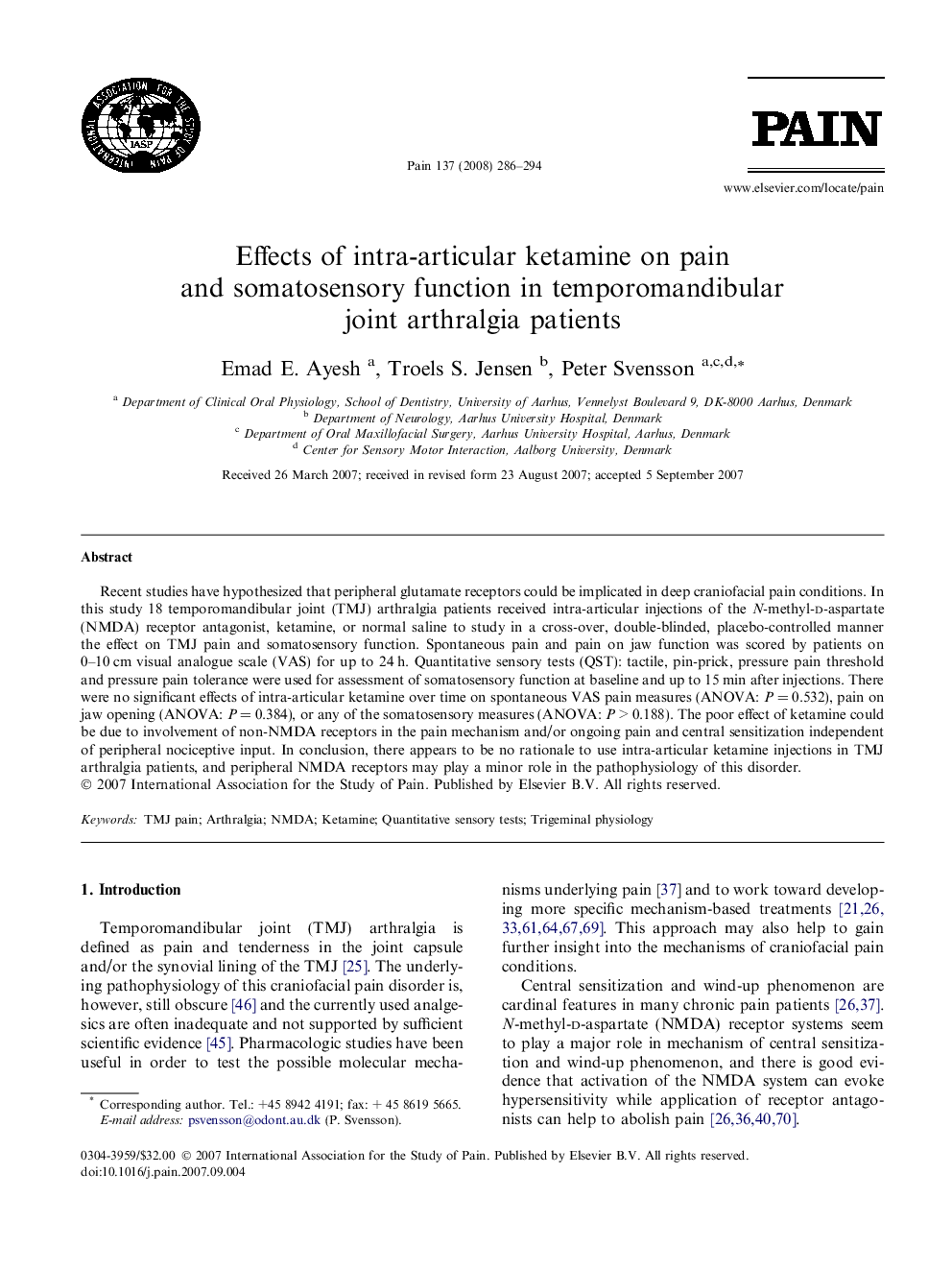| کد مقاله | کد نشریه | سال انتشار | مقاله انگلیسی | نسخه تمام متن |
|---|---|---|---|---|
| 915143 | 918432 | 2008 | 9 صفحه PDF | دانلود رایگان |

Recent studies have hypothesized that peripheral glutamate receptors could be implicated in deep craniofacial pain conditions. In this study 18 temporomandibular joint (TMJ) arthralgia patients received intra-articular injections of the N-methyl-d-aspartate (NMDA) receptor antagonist, ketamine, or normal saline to study in a cross-over, double-blinded, placebo-controlled manner the effect on TMJ pain and somatosensory function. Spontaneous pain and pain on jaw function was scored by patients on 0–10 cm visual analogue scale (VAS) for up to 24 h. Quantitative sensory tests (QST): tactile, pin-prick, pressure pain threshold and pressure pain tolerance were used for assessment of somatosensory function at baseline and up to 15 min after injections. There were no significant effects of intra-articular ketamine over time on spontaneous VAS pain measures (ANOVA: P = 0.532), pain on jaw opening (ANOVA: P = 0.384), or any of the somatosensory measures (ANOVA: P > 0.188). The poor effect of ketamine could be due to involvement of non-NMDA receptors in the pain mechanism and/or ongoing pain and central sensitization independent of peripheral nociceptive input. In conclusion, there appears to be no rationale to use intra-articular ketamine injections in TMJ arthralgia patients, and peripheral NMDA receptors may play a minor role in the pathophysiology of this disorder.
Journal: PAIN® - Volume 137, Issue 2, 15 July 2008, Pages 286–294